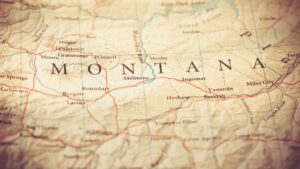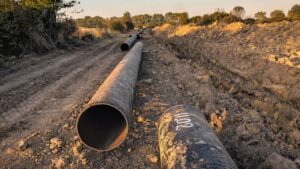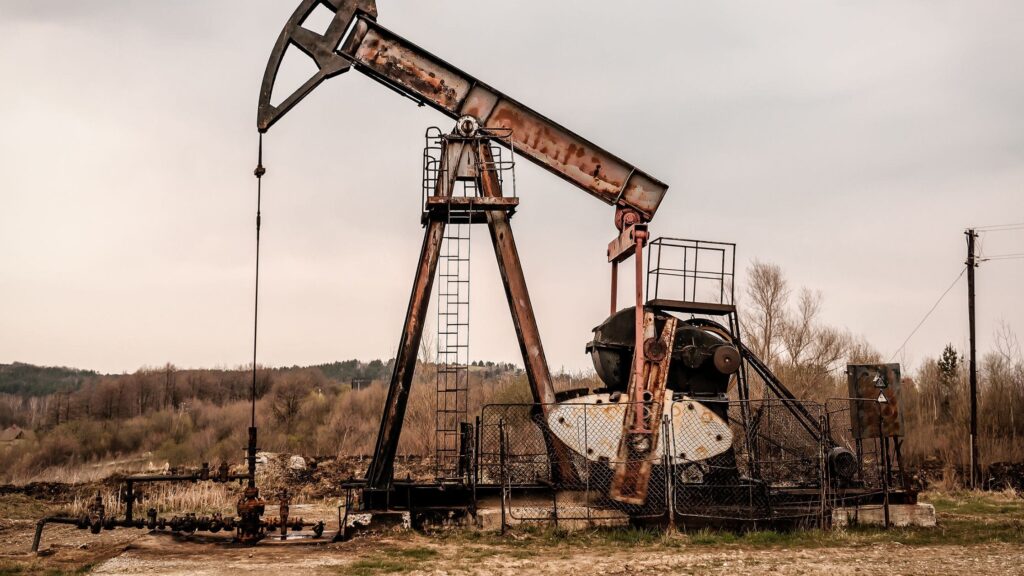The mineral rights in Montana are unique to the state and may not be applicable elsewhere. The essence of this guide is to provide you with the information you need about the process of mineral rights in Montana and how it’ll affect any interest you might have as well.
How are Mineral Rights Defined in Montana?

In Montana, mineral rights pertain to the legal entitlement to explore, mine, and produce the underground resources located beneath the surface of the land. These rights can be sold, leased, or transferred separately from the land itself. This distinction is crucial in understanding the complex landscape of property and resource management in Montana.
What are the Main Mineral Rights Properties in Montana?
Montana’s landscape is dotted with diverse mineral properties that underscore the state’s rich geological tapestry. Here, we identify the main types of mineral rights properties:
- Unified Estate: This is where the ownership of both the surface land and the minerals beneath are held by one entity. This integration simplifies management but requires careful consideration of land use to balance resource extraction with surface conservation.
- Severed/Split Estate: In these cases, the mineral rights are separated from the surface rights. This can lead to situations where the surface land is owned by one party, and the subsurface minerals are owned by another. It’s a common scenario that often requires negotiation between the surface owner and the mineral rights holder to access the minerals.
What are the Major Oil and Gas Fields in Montana?
Montana’s landscape is punctuated by significant oil and gas fields, each with its own geological and economic characteristics. These fields not only contribute to the state’s economy but also play a crucial role in the broader energy resources of the United States.
- Elm Coulee Oil Field: Located in Richland County, this is one of the most productive oil fields in Montana. Known for its rich deposits accessible through advanced horizontal drilling techniques, it significantly contributes to local oil output.
- Bakken Shale: Extending from North Dakota into Montana, the Bakken Shale is renowned for its substantial oil and natural gas reserves. This field has been at the forefront of the U.S. oil boom due to its extensive shale oil production.
- Heath Shale: Situated primarily in central Montana, this field is known for both oil and natural gas production, tapping into the deeper geological layers unique to this area.
- Cut Bank Oil Field: Near the Canadian border, this field is noted for its longevity in production and the diversity of hydrocarbons, including both oil and natural gas.
What are the Main Minerals Found in Montana?
Montana, often called the “Treasure State,” is rich in a variety of minerals, making it a key player in the mining industry. Below is a list of prominent minerals found across the state:
- Coal: Montana’s coal deposits are among the largest in the United States, primarily found in the Powder River Basin, which extends into Wyoming.
- Gold: The discovery of gold in the 19th century was instrumental in the settlement and economic development of Montana. Today, several active mines continue to produce gold.
- Copper: Butte, Montana, was once known as “the Richest Hill on Earth” for its extraordinarily rich copper mines. Copper mining continues to be a significant economic activity.
- Silver and Lead: These minerals are often found together and were historically mined in several areas across Montana, contributing to the state’s rich mining heritage.
- Platinum and Palladium: The Stillwater Mining Complex, located in the Beartooth Mountains, is one of the few significant sources of these precious metals in North America.
How to Find Out Who Owns Mineral Rights to a Property in Montana?
Determining who owns the mineral rights to a property in Montana involves several crucial steps. These steps are designed to ensure that any individual or company can accurately and efficiently find out ownership details, which is essential for legal, commercial, or personal reasons.
- Review Property Deed: Start by examining the property deed to identify any mentions of mineral rights assignments. Deeds can be obtained from the county clerk’s office where the property is located.
- Check with County Clerk: Visit or contact the county clerk’s office to access any public records related to mineral rights on the property. This includes looking for any separate mineral deeds or leases.
- Landman Consultation: Engage a landman, who specializes in researching land titles and mineral rights, to perform a thorough search and provide a detailed report.
- Legal Assistance: Consider consulting with a lawyer who specializes in mineral rights in Montana to navigate complex scenarios, especially if disputes over ownership arise.
- Online Resources: Utilize online databases and resources that provide information on mineral rights ownership. This can include state-specific websites or national databases that track mineral rights.
How to Search for Mineral Rights Records in Montana?
Searching for mineral rights records requires a focused approach to ensure you gather all relevant and accurate information. Here are the steps to follow:
- County Clerk’s Office: Visit the county clerk where the property is located. Request access to land records that pertain to mineral rights. Many offices have digital records that can be accessed online as well.
- Montana Bureau of Mines and Geology: Utilize the resources offered by the Montana Bureau of Mines and Geology, which may have pertinent data on mineral operations and rights across the state.
- State Land Office: Check with the Montana State Land Office, which manages state-owned lands, including those with mineral rights. They can provide insights into mineral rights owned by the state.
- Title Search Company: Employ the services of a title search company that can conduct an in-depth search for mineral rights. This is particularly useful for complex cases where multiple transactions might have occurred.
- Online Land Records Platforms: Use online platforms that aggregate land and mineral rights records to facilitate easier searches. Ensure these platforms cover Montana-specific records.
How Do You Claim Mineral Rights in Montana?
Claiming mineral rights in Montana is a process that requires careful attention to legal details and thorough documentation. Here’s how you can go about it:
- Property Research: Begin by researching the property to confirm there are unclaimed mineral rights. This might involve checking with the county clerk’s office or hiring a professional landman to conduct a thorough search.
- File a Claim: If mineral rights are unclaimed, file a claim at the county office where the property is located. This filing should include a legal description of the property and any supporting documentation.
- Verification Process: The county clerk will verify your claim, checking for any competing claims and ensuring all paperwork is in order.
- Legal Publication: Some counties require that you publish your claim in a local newspaper to allow any hidden stakeholders to come forward.
- Claim Approval: Once all procedures are followed, and no disputes arise, the claim is typically approved, granting you the mineral rights.
How Does Mineral Rights Inheritance Work in Montana?
Inheriting mineral rights in Montana follows a distinct set of legal procedures which ensure that these valuable assets are correctly transferred from one generation to the next.
- Legal Will: Mineral rights are usually transferred through a will where the deceased specifies who inherits the rights. It is crucial to have a clear and legally binding will to prevent disputes.
- Probate Process: If mineral rights are mentioned in a will, they must go through the probate process where the court confirms the rightful heir and legally transfers the rights.
- Without a Will: If there is no will, mineral rights pass according to Montana’s laws of intestate succession. Generally, this means that the rights would transfer to the nearest relative or relatives according to state law.
- Consideration of Liens and Debts: It’s important to consider any liens or debts against the estate, as these may need to be settled before the mineral rights can be fully inherited.
Do You Have to Pay Taxes on Mineral Rights in Montana?
Taxation on mineral rights in Montana can be complex, and it is essential to understand both the ongoing taxes and those incurred during the transfer or sale of rights.
- Property Taxes: Mineral rights are considered real property in Montana and may be subject to property taxes if they are producing revenue.
- Income Taxes: Revenue generated from the extraction of minerals (such as royalties or lease payments) is taxable. The state of Montana requires individuals and companies to report this income on their tax returns.
- Inheritance Taxes: While Montana does not have a specific inheritance tax, federal taxes may apply if the estate exceeds a certain value. It is important to consult with a tax professional to understand these implications fully.
- Example Case: For instance, if an individual inherits mineral rights that generate $50,000 annually in royalties, this income would need to be reported and would be subject to state and federal income taxes.
What Happens to Mineral Properties Whose Owners Cannot Be Found?
In Montana, when the owners of mineral properties cannot be located, the state has specific procedures to manage these situations:
- Escheatment Process: If efforts to locate the owner fail, the property may escheat to the state after a certain period. This means the state temporarily takes custody of the property, including mineral rights, until an heir or claimant comes forward.
- Public Notice: The state must publish a notice regarding the unclaimed property, allowing potential owners or heirs to come forward and claim their rights.
- Claiming Process: Interested parties must present proof of ownership or inheritance to claim the mineral rights. This process is overseen by the Montana Department of Revenue, which handles unclaimed property.
- Auction: If no valid claims are made within the stipulated time, the state may auction the rights to the highest bidder, with proceeds held for the original owner or heirs should they eventually surface.
What Happens to Unclaimed Mineral Rights Properties?
Unclaimed mineral rights in Montana are handled through a defined legal framework to ensure that these resources are managed responsibly:
- Registry and Reporting: Holders of unclaimed mineral rights, such as exploration companies or estate managers, are required to report these rights to the state if they remain unclaimed for a period extending beyond five years.
- State Custodianship: The state takes custodianship of these unclaimed rights, maintaining the property under state control until claimed by the rightful owners or heirs.
- Search for Rightful Owners: The state conducts a search for rightful owners using public records and may collaborate with landmen or legal professionals to trace potential heirs or previous owners.
- Revenue Generation and Management: During the period of state custodianship, any revenue generated from these mineral rights is held in trust. If the rightful owners are found, the accumulated revenue is transferred to them as part of the property rights.
How Much Are Mineral Rights Worth in Montana?
The value of mineral rights in Montana can vary significantly, influenced by a variety of factors including the type of minerals, market demand, and extraction potential. On average, mineral rights can be worth anywhere from a few hundred to several thousand dollars per acre.
How Much Are Mineral Rights Worth Per Acre in Montana?
The per-acre value of mineral rights in Montana can differ widely. It can be as low as $50 to $300 per acre, or as high as $1,000 to over $5,000 per acre.
Leasing Mineral Rights Value
Leasing mineral rights can offer landowners a steady income without the need to sell their rights outright. The value of leasing can vary based on several key elements:
- Lease Bonuses: An upfront payment made to the landowner when the lease is signed, which can range significantly based on the potential for production. In Montana, lease bonuses can vary from $50 to $3,000 per acre.
- Royalty Rates: The percentage of the revenue generated from the extraction of minerals that is paid to the landowner. In Montana, typical royalty rates are between 12% to 20%.
- Duration of Lease: Most leases are signed for a primary term of three to five years, but they may extend longer if production is ongoing.
- Production Potential: Areas with higher production potential tend to attract higher lease values and more favorable terms for the landowner.
Non-Producing Mineral Rights Value
Prices for non-producing mineral rights in Montana can range widely but typically fall between $50 to $500 per acre, depending on the factors mentioned below.
- Geological Potential: If geological surveys and exploratory data suggest the presence of valuable minerals, these rights might hold significant speculative value.
- Market Trends: The future market potential of suspected minerals can also enhance the value of non-producing rights.
- Legal and Environmental Factors: Restrictions or benefits provided by state law can also affect value.
Producing Mineral Rights Value
In Montana, producing mineral rights can vary from $1,000 to over $10,000 per acre, heavily dependent on the production rate and the type of mineral being extracted. The value of producing mineral rights is determined by:
- Current Production Levels: Higher producing wells or mines will substantially increase the value of mineral rights.
- Commodity Prices: The current market prices of the extracted minerals greatly affect the rights’ value. For instance, during periods of high oil prices, oil rights may see a peak in value.
- Remaining Reserves: The estimated volume of remaining minerals also plays a crucial role in valuation.
How Do You Buy Mineral Rights in Montana?
Buying mineral rights in Montana involves a series of strategic steps to ensure a legally sound and financially prudent investment. Here’s how to proceed:
- Research Property and Ownership Details: Start with identifying the property of interest and researching its ownership history through county records or a trusted title company.
- Conduct Due Diligence: Investigate the current status of the mineral rights, including any production activity, leases in effect, and potential encumbrances.
- Valuation: Assess the value of the mineral rights considering factors like past production data, geological surveys, and current market conditions for the minerals involved.
- Negotiate Terms: Contact the rights holder to negotiate terms, including price, transfer conditions, and any royalties from ongoing production.
- Legal Review: Engage a lawyer specialized in mineral rights to review all contracts and agreements to ensure they comply with Montana laws and protect your interests.
- Closing the Deal: Finalize the transaction at a title company, which will handle the official documentation and transfer of rights.
How To Sell Your Mineral Rights in Montana?
Selling mineral rights in Montana can be a lucrative decision if done correctly. Follow these steps to ensure a smooth transaction:
- Assessment and Valuation: Have your mineral rights assessed by a professional to determine their current market value based on production potential and existing market rates.
- Market the Rights: List your mineral rights for sale through specialized real estate or mineral brokerage services to reach potential buyers.
- Negotiations: Field offers and negotiate terms with potential buyers. Consider not only the sale price but also terms related to the transfer and any retained royalties.
- Legal Checks: Utilize legal services to ensure all aspects of the sale adhere to Montana mineral rights laws and that the contract protects your interests.
- Complete the Sale: Close the sale through a reputable title company that specializes in mineral rights, ensuring all legal documents are correctly filed and the rights are duly transferred.
How to Transfer Mineral Rights Ownership in Montana?
Transferring mineral rights in Montana is a process that requires careful attention to detail and adherence to state laws. Here are the steps to ensure a smooth transfer:
- Title Search: Begin with a thorough title search to verify the ownership and check for any liens or encumbrances that may affect the rights.
- Draft a Deed: The next step is to draft a mineral deed, which should specify the details of the rights being transferred. It’s crucial to accurately describe the property and rights involved.
- Signature Requirements: The deed must be signed by the current rights holder in the presence of a notary to ensure its validity.
- File the Deed: File the signed deed with the county clerk’s office in the county where the property is located. This filing officially records the change in ownership.
- Pay Transfer Taxes: Depending on the county, there may be transfer taxes applicable to the transaction that must be paid at the time of filing.
- Notify Interested Parties: Inform all parties who have a vested interest in the property, such as lessees or operators, about the change in ownership.
Conclusion
Transferring and selling of mineral rights in Montana is a process that requires caution and proper research, as figuring out mineral rights ownership can be confusing.
You don’t want to be caught with illegal property rights, as that can put you in legal problems or even a financial crisis.
Understanding the complex factors involved before buying or selling mineral rights will save you a lot of stress.
Frequently Asked Questions
Do Mineral Rights Expire in Montana?
No, mineral rights in Montana do not expire solely due to the passage of time. However, if mineral rights are severed from the surface rights, the owner must actively manage or lease the rights to maintain their claim. Inactivity over a legally defined period can risk the rights reverting to the surface owner under the doctrine of abandonment.
What Happens to Mineral Properties in Montana When Someone Dies?
When a mineral rights holder in Montana passes away, the rights are transferred to their heirs or as dictated by their will. If no will exists, the rights pass according to state intestacy laws. The heirs or administrators must then update the deed through the county recorder’s office to reflect this change in ownership officially.






